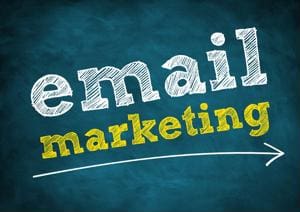
Email Marketing to Schools: Proven Strategies To Reach K–12 Decision-Makers
Discover effective email marketing strategies for vendors targeting K–12 schools. Learn segmentation, personalization, timing, and best practice tips.
There’s a growing disconnect between traditional university curricula and today’s workforce demands. While companies are frustrated over the lack of job-ready graduates, higher education institutions struggle to keep pace with shifting requirements. The pressure is on—and the solution lies in closer alignment between academia and industry.
Read on to explore how institutions can realign academic programs with real-world job skills and the role education solution providers play in bridging this gap.
The “skills gap” refers to the growing mismatch between what employers need and what graduates are prepared to deliver. As job demands shift faster than curricula evolve, many new hires fall short on the practical, technical, and soft skills today’s roles require. Strada Education Foundation reports that 52% of recent four-year college grads are underemployed within a year of graduating. And with 39% of job skills expected to change by 2030, per the World Economic Forum, that gap is only set to widen.
According to McKinsey, 87% of companies worldwide say they’re already facing skills shortages—or expect to within the next five years. These gaps are often attributed to:
To close the gap, many universities are rethinking how they design and deliver education:
The goal: equip graduates with the tools to succeed—not just today, but in the jobs of tomorrow, too.
To better prepare students for the job market, colleges and universities are embedding practical, career-focused skills directly into their programs. Here are a few key ways schools are making that happen:
Institutions are also transforming traditional career services into full-fledged career readiness ecosystems. These modern approaches go beyond job boards and resume workshops—they offer ongoing, personalized support that prepares students for success from day one.
Explore how institutions are reimagining career services to meet the needs of today’s learners:
Schools are bringing employers directly to campus for ongoing engagement, offering students real-time insights into industry expectations and hiring trends.
One-size-fits-all career advice is out. Institutions are investing in tailored coaching that helps students connect academic choices to long-term career goals.
By linking students with recent graduates working in their fields of interest, schools are creating meaningful mentorship opportunities rooted in real-world experience.
Career services are no longer standalone departments—they’re part of a larger ecosystem that blends academics, experiential learning, and workforce engagement.
Institutions are shifting focus from senior-year job prep to continuous career development that starts early and evolves with the learner’s journey.
For solution providers, the opportunity is clear: by supporting curriculum and career innovation, they become essential partners in shaping a more workforce-aligned future for higher education. To support institutions through this shift, providers can:
Offer real-time analytics to help institutions identify in-demand skills and align curricula with evolving workforce trends.
Provide platforms that make it easy to create, manage, and track stackable, skills-based credentials tailored to industry needs. Integrating with digital badging systems can increase visibility and portability for learners across job platforms.
Deliver solutions that embed job prep into the student journey. This might include resume building, interview coaching, and internship matching.
Help schools monitor graduate success, underemployment trends, and skill alignment with career pathways using data dashboards and reporting tools. Be sure to include feedback loops so institutions can refine programs based on real-world alumni outcomes.
Facilitate partnerships between campuses and employers through co-designed programs, advisory boards, and real-world project integration. This includes offering tools that support industry participation in curriculum development and measure employer satisfaction over time.
When it’s time to launch your outreach, finding the right decision-maker in higher ed can be complex. That’s where trusted partners like Agile Education Marketing come in—offering the expertise to help you target the right roles at the right institutions with confidence.
Aligning education with workforce needs is a powerful opportunity to boost student outcomes—and solution providers play a part in making it happen. By stepping up as partners in employability and workforce development, providers can help institutions close skills gaps and prepare learners for real-world success.
Agile Education Marketing helps you connect with institutions and champion the future of work-ready education through accurate data, actionable insights, and omni-channel marketing strategies. Whether you’re highlighting how your solution builds workforce-ready skills or aligning with institutional goals, Agile ensures your outreach is timely, targeted, and effective.
Ready to partner for change? Reach out to start the conversation today.

Ali, VP of Marketing at Agile Education Marketing, is a strategy development specialist with over 20 years of experience in the education market. Prior to joining Agile, she held leadership roles at Pearson, McGraw-Hill, and InsideTrack and earned her Master of Business Administration from the University of Colorado.

Discover effective email marketing strategies for vendors targeting K–12 schools. Learn segmentation, personalization, timing, and best practice tips.

Explore key statistics for class size and academic performance, plus trends and insights into student achievement, school priorities, and decision-making.

Every November 8th, National STEM/STEAM Day shines a spotlight on the communities that help children explore their passions in science,
We use cookies to ensure you get the best experience on our website. Learn more.
We’re here ready to answer your questions! Share a little information with us below and one of our Agile experts will be in touch shortly.